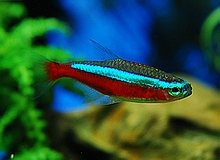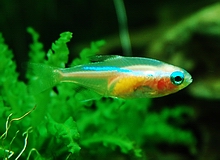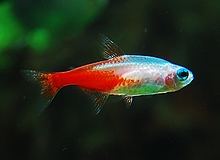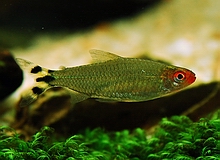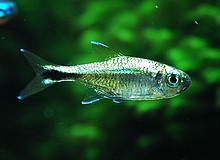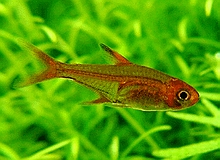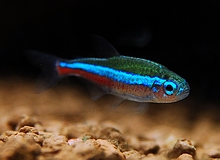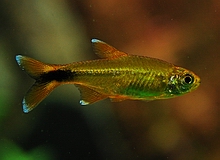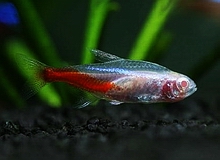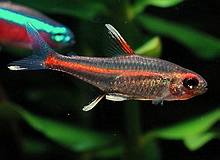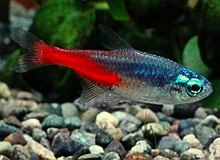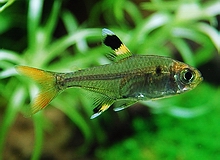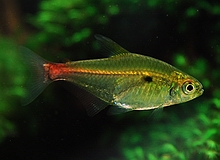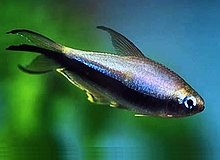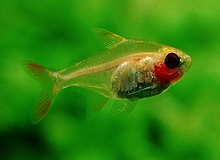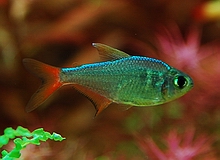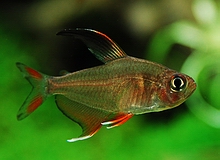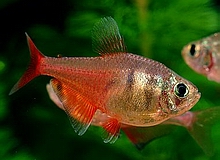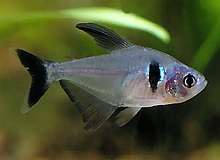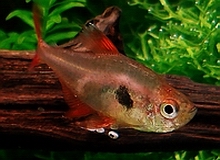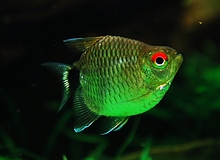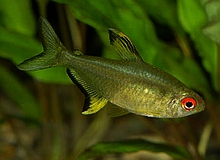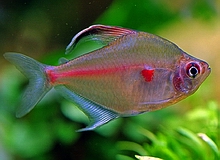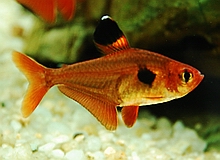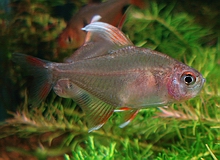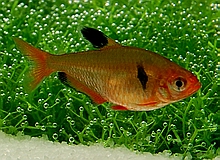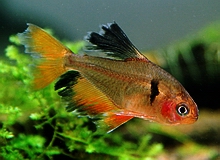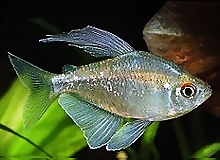Tetras
are small species of freshwater fish found in streams and rivers throughout
the subtropical and tropical zones of South & Central American,
and Africa. They are members of the Characidae family which are distinguished
from other fish by the presence of a small adipose fin between the dorsal
fin and caudal fin. Most tetras are peaceful and have an unaggressive
temperament which makes them suitable in any peaceful community aquarium.
They are active schooling fish and do best in groups of ten or more
of the same species, with more being better. In their natural enviornment
most tetras live in soft and acidic waters (pH 5.5-6.8) with temperature
ranging from 25 to 28¢X C. Tetras do best in a well-planted aquarium
with moderate lighting using dark substrate to display their vibrant
colorations. In many species, male tetras claim small territory which
they defend against other males, but this leads to the liveliness of
the aquarium.
Good tankmates for smaller tetras include rasboras, dwarf cichlids,
corydoras, hatchetfish, pencilfish, and plecos. Larger tetras such as
Bleeding Heart Tetras, Diamond Tetras and Congo Tetras can be kept with
larger fish such as Angelfish and Discus. Species such as the cardinal
tetras are among the most popular of all freshwater fish, adding a touch
of brilliance and social interaction to the community aquarium.
In some species, sexing is quite easy¡K adult females are more full bodied
and wider in the stomach area, whereas, males are slimmer, sometimes
having larger dorsal fin, and coloration is usually more intense. Males
are often territorial and will defend their space against their neighbors
by presenting themselves in profile with the dorsal and anal fins fully
extended, and their coloration intensified, making the edging of the
body patch stand out prominently. This is a wonderful display when it
happens. Sometimes they will exchange blows which can tear the fins,
but this damage heals quickly.
Most tetras are not easily breed. The Aquarist must be willing to spend
a lot of time and have patience to breed them. The tetras do not engage
in any type of brood care, but simply deposit their eggs on plants or
scatter them around the tank. Water conditions must be very soft and
acidic with a separate breeding tank for this purpose. Once the eggs
are laid the parents must be removed or they will eat the eggs. The
finest of food must be available for the fry, and in some species baby
brine shrimp is even too large for the first couple of days. Although
difficult to do, breeding is not impossible and can be one of the best
experiences in your hobby.
|

